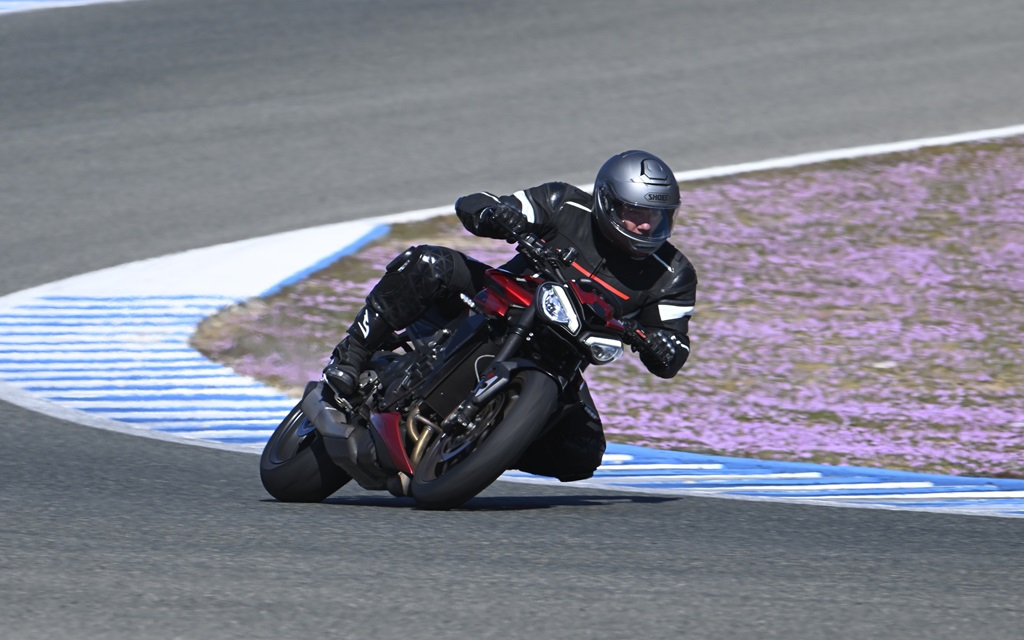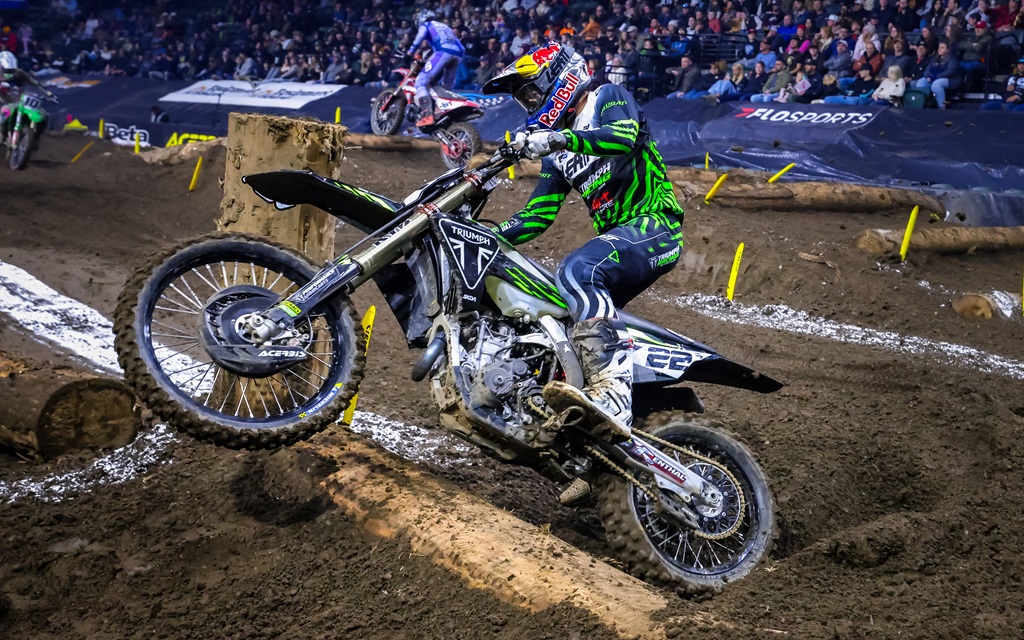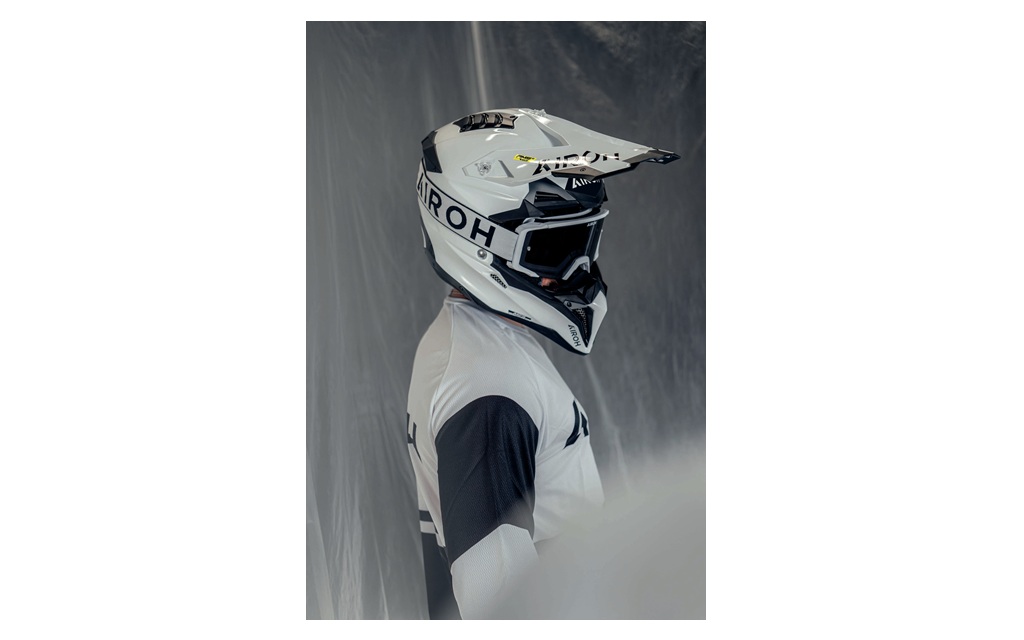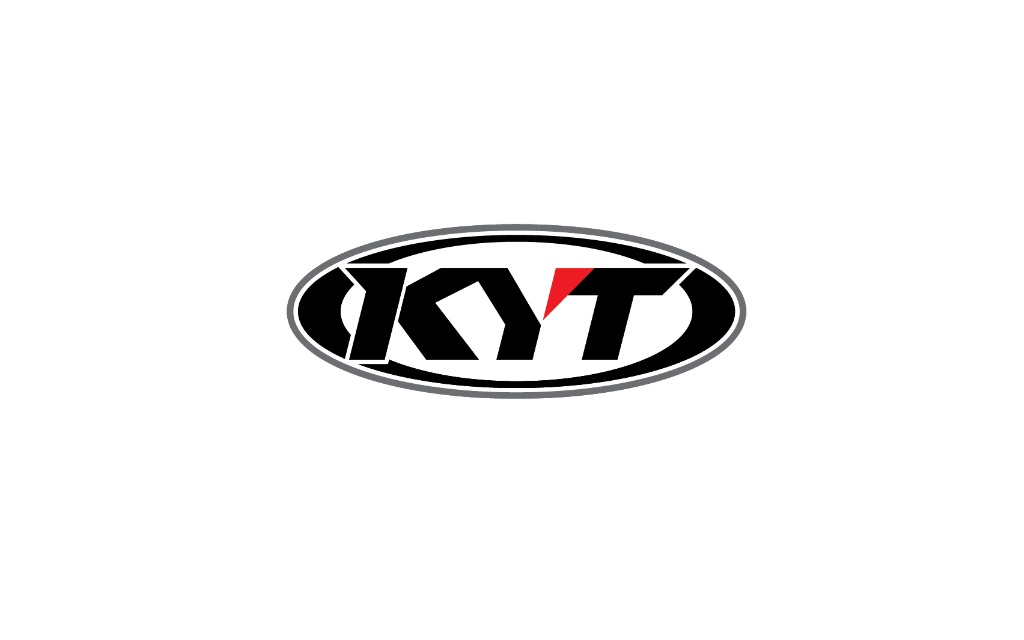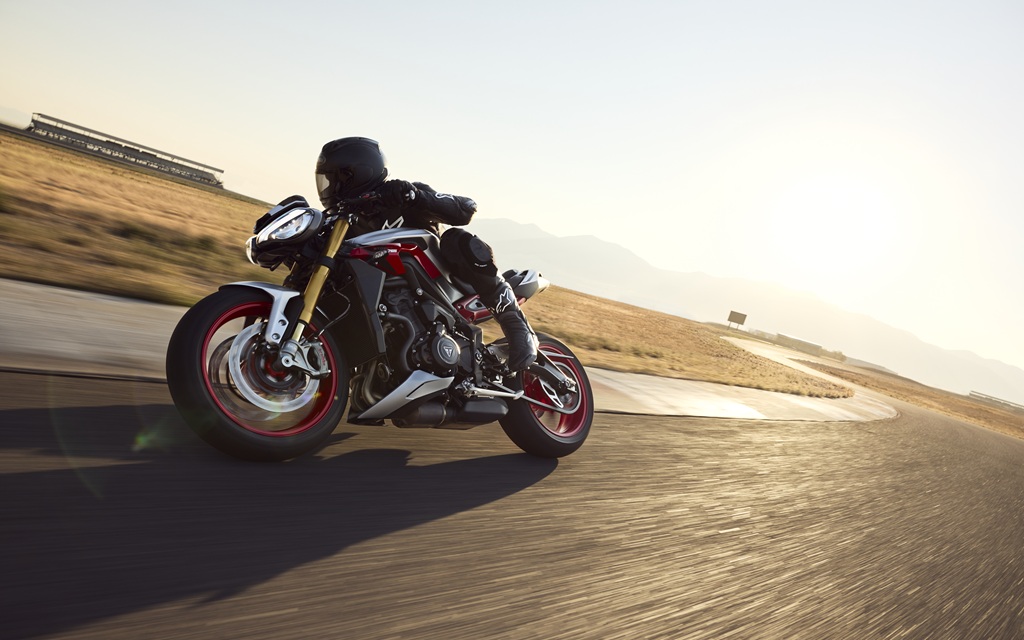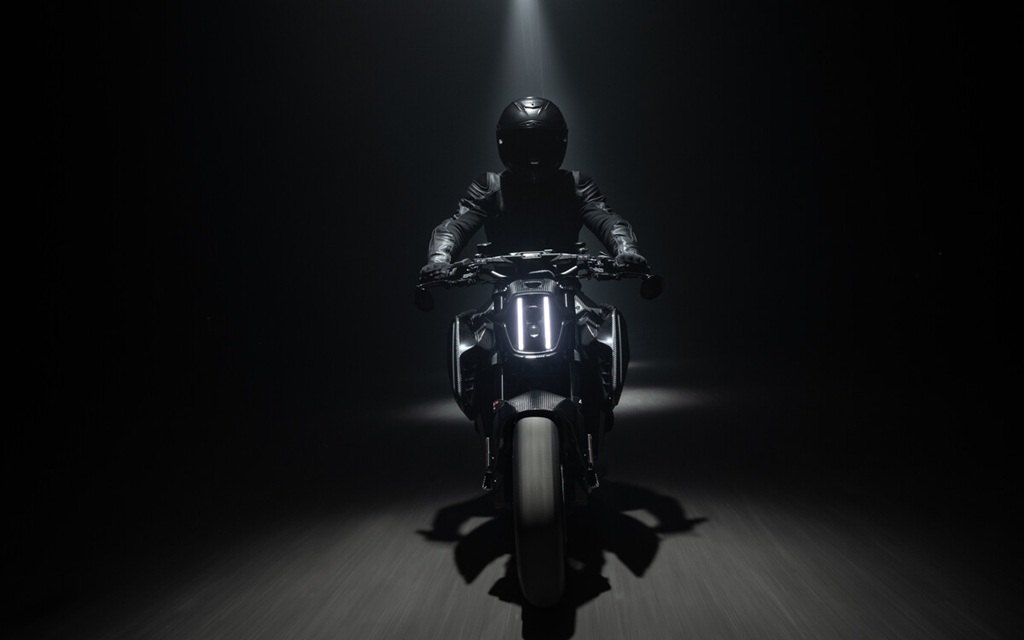When the market speaks, its words can be cruel, like when it declared 600s not popular enough to warrant further development. The verdict came shortly after the 2008 financial crisis, plunging the once-thriving middleweight category into an extended period of dormancy that ultimately led to its demise. Today, half the models have disappeared entirely (Honda CBR600RR, Yamaha YZF-R6, Triumph Daytona 675) while the others have all but stalled in their progress (Suzuki GSX-R600, Kawasaki ZX-6R, MV Agusta 675). With all significant racing limiting displacement to 599 cc having now fizzled out, the fact is 600s are essentially a dead class. Its soul, though, endures in Moto2 competition where a 765 cc evolution of Triumph’s much-missed Daytona 675R engine powers the entire grid. That same triple can be found in the revised for 2023 Street Triple family.
Jerez de la Frontera (Spain) The loss of the 600 class is as immense as it is sad for motorcycling. But the reality is that adversity provided manufacturers with an opportunity to break free from the constraints of the once sacred 599 cc displacement limit imposed by racing rules. Suddenly, the possibility of building something larger was just there. While Kawasaki, with its 636 cc ZX-6R, toyed the longest with the idea of a «bigger than 600 cc 600», it was models powered by triples that pushed things the furthest. For instance, MV Agusta’s current middleweight approaches 800 cc, while Triumph has settled on a 765 cc engine.
But the market’s judgment endures, and while a glimmer of hope briefly emerged from Triumph with the short-lived Daytona Moto2 765, created to commemorate the British brand’s exclusive engine provider role in the Moto2 class in 2019, the only way to experience Hinckley’s “765 cc 600” in 2023 is through the Daytona’s stripped-down counterpart, the Street Triple 765. This year, the model has seen significant improvements and is available in three versions: the $11,895 R, designed primarily for everyday street use; the $14,295 RS variant tailored for track day enthusiasts; and the exclusive limited-run $17,995 Moto2 Edition, which celebrates Triumph’s partnership with the prestigious Moto2 class.
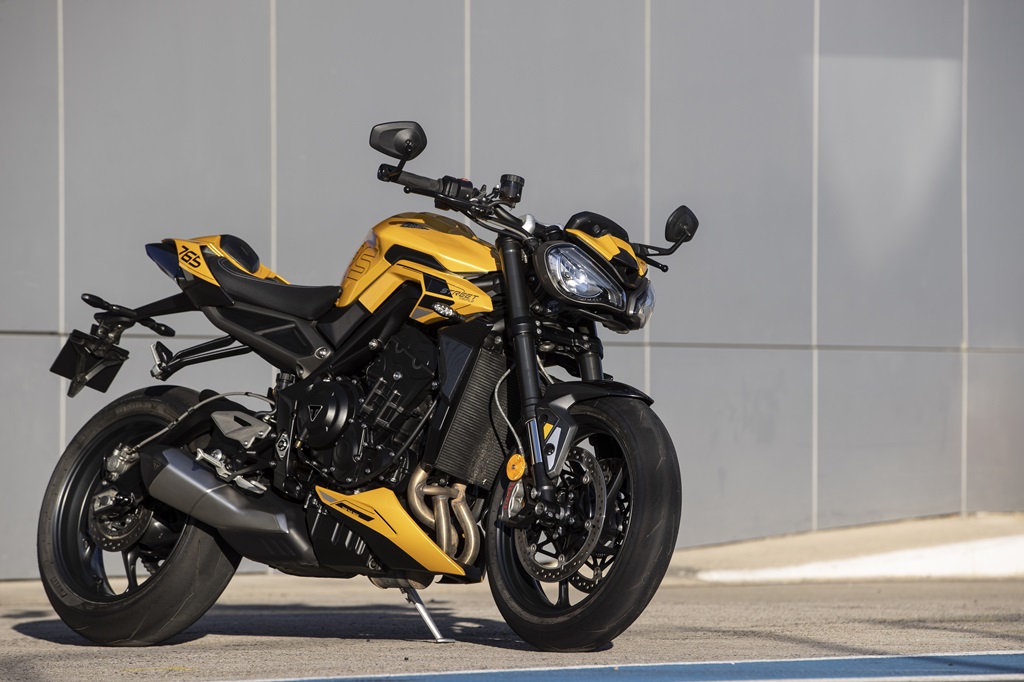
Since the Moto2 edition, essentially an RS with an Öhlins fork, clip-ons, various carbon fiber body parts and distinctive paint, had already sold out, it wasn’t available at the Street Triple 765 family global press launch. We did, however, get the opportunity to spend an entire day with the R version in the Spanish countryside and another day with the RS, this time on the Jerez de la Frontera racetrack. Neither disappointed, and each showcased distinct enough characteristics to justify their price difference and make them worthy of consideration for riders with varying priorities.
The refreshed inline 765 cc triple represents one of the most notable improvements to the 2023 Street Triple 765 family. Triumph extensively reengineered it based on lessons learned from recent Moto2 seasons with virtually every internal engine component having undergone refinement and weight reduction to maximize power output and minimize mechanical losses. This evolution of the English middleweight triple gets new pistons, an optimized combustion chamber that increases compression from 12.65:1 to 13.25:1, improved intake tracks for better airflow, updated valves, redesigned cams, and new connecting rods. The 6-speed transmission now features more closely spaced gears, and the 3-into-1 exhaust system is not only lighter but also provides improved flow.
The result is a 2-horsepower boost for the R version, now delivering 118.4 hp, and a 7-horsepower increase for the RS version, which now produces 128.2 hp. Interestingly, despite these power differences, the engines in both the R and RS models are mechanically identical. The ten-horsepower gap between them primarily results from variations in ECU programming.
Several key distinctions set the R and RS models apart, enough so to cater to motorcyclists with varying preferences. Identifying each version is straightforward, as prominent “R” or “RS” labels adorn the gas tank. Additionally, the RS boasts a belly pan and bar-end-mounted mirrors. The most crucial mechanical distinction lies in the suspension used by each model. Both the R and RS feature fully adjustable front forks and rear shocks, but the RS takes it up a notch with its SHOWA BPF (Big Piston Fork) fork, surpassing the R’s SHOWA SFF-BP (Separate Function Fork-Big Piston). In the rear, the RS is equipped with an Öhlins STX40 shock, while the R relies on a more standard SHOWA unit. Interestingly, these rear shocks impact seat height, with the R’s being 10 mm lower. Both models offer the option of an accessory low seat that reduces seat height by 20 mm.
The differences between the R and the RS extend to the front brake setup. The R, despite its more street-oriented focus, boasts excellent 4-piston, radially mounted Brembo M4.32 calipers. But the RS, again, takes it up a notch with top-of-the-line 4-piston, radially mounted Brembo Stylema calipers operated by a Brembo master cylinder. In terms of tires, the R is fitted with Continental Contiroads that prioritize longevity, while the RS comes equipped with Pirelli Diablo Supercorsa SP V3s, ideal for track-day enthusiasts.
Distinctions between the R and RS models also include their instrumentation and electronic features. On the R, the digital instrumentation, while looking just a tad dated, is comprehensive and easy to read. Meanwhile, the RS boasts a more contemporary 5-inch TFT color screen that displays all functions and information. In both cases, several connectivity functions are available as an option. The R offers four riding modes: Road, Rain, Sport, and Rider, while the RS adds one more: Track. On both versions, power is limited to 100 hp in Rain mode, and the IMU (Inertial Measurement Unit)-managed ABS and traction control systems are now lean-sensitive. For both the R and the RS, the braking system is combined, the ABS system offers two settings but cannot be switched off, the traction control system provides four levels of intervention and can be deactivated, and an up/down quick shifter is included as standard.
Among the many countries invited to this press event, some were scheduled to ride the R model on the road first, while others lead off the launch with a day at the Jerez circuit aboard the RS. Given that the morning temperature hovered around a chilly 5 degrees and the forecast promised warmer days ahead, I was delighted to find myself in the group that would begin on the street with the R. This allowed me to avoid a bitterly cold track and, equally importantly, gave me the chance to acquaint myself with the Street Triple 765 before tackling the famous MotoGP-level Jerez circuit for the first time. Indeed, Jerez was part of those tracks I never had the opportunity to experience, and I was eagerly looking forward to finally discover what all the fuss was about.
But prior to the RS and Jerez, a day on the R was the plan. Our small group consisted of six journalists, among them a couple of guys from Switzerland and Belgium. Our lead and tail riders, both frisky Brits, never missed an opportunity to tease each other about their mature age. But if they weren’t engaged in banter, the conversation inevitably gravitated towards their mutual fascination with the Isle of Man TT. This obsession of theirs with the mythical race became abundantly clear as soon as we hit the road.
We left the Jerez circuit parking lot on the Street Triple 765 R and quickly found ourselves on two-lane country roads where we instantly adopted an absolutely outrageous pace. The winding back roads meandered gracefully through picturesque farmland, cows and sheep roaming freely on verdant hills. Thankfully, those roads were also virtually deserted, which meant maintaining our hair-raising pace could be done with minimal risk, especially as our lead rider seemed to have engraved in his memory every pavement crack and every corner’s optimal speed.
After about an hour of this, we made a welcome first stop. It was a necessary pause as the combination of high speeds, chilly morning air and total lack of wind protection had left me feeling hypothermic with an aching neck. As the day progressed, the temperature gradually rose to a comfortable fifteen degrees, but as for the pace, with the exception of villages where we did slow down, it remained just as hectic right until we got back to the track.
The updated 765 cc triple plays a significant role in the Street Triple R’s overall feel of “street sportiness”. Torque is generously available from the very first revs and much higher than what the average 600 cc sportbike inline-4 offered. Power delivery linearly gets stronger from there on the way to a quite fun 120-ish horsepower maximum. But Triumph’s triple offers way more than just numbers and is actually so rider-friendly and cooperative in normal use that one could easily forget its Moto2 origin —a racing category only one step below the MotoGP. It’s not a perfectly smooth engine, but without being annoyingly buzzy either. As for the close-ratio tranny which by nature implies a greater than average number of shifts, it’s an absolute joy to use, especially with the up/down quickshifter being so well dialed in. Last but certainly not least on the list of characteristics that make this engine so pleasant is the fantastic way it sings from the first rpms all the way up to the rev limiter.
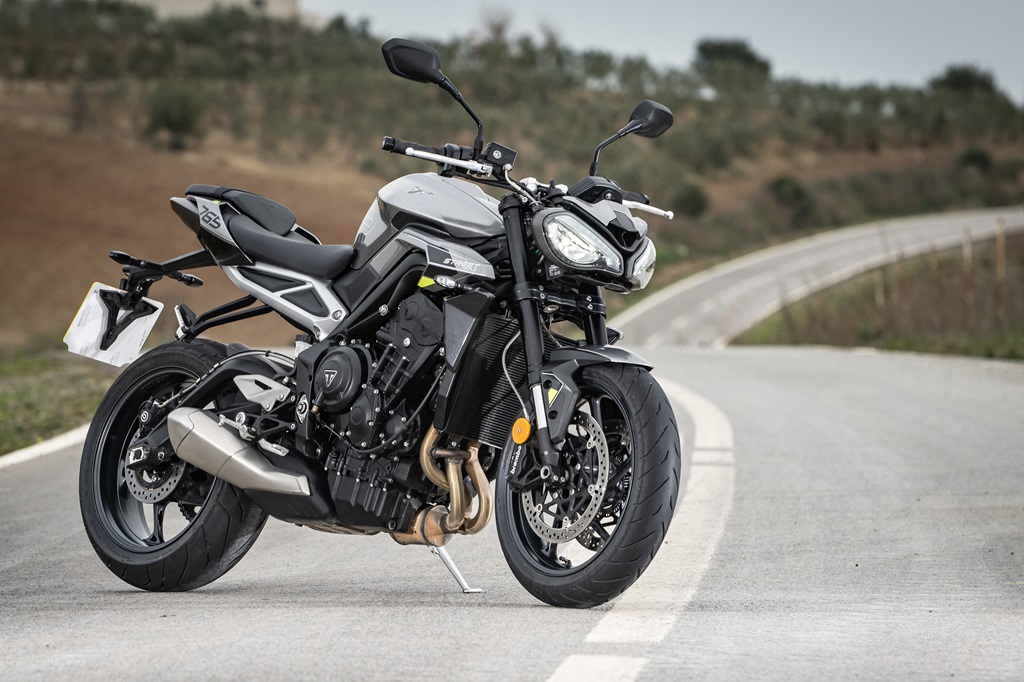
One thing’s for sure; our TT-paced street day turned into excellent preparation for the track sessions scheduled the following day on the RS. As predicted, the weather was slightly warmer on the second morning and Triumph capitalized on this by delaying our first session by about an hour, which allowed both the air and the track to warm up. As I left the pits and entered the famous Jerez circuit for the first time, I felt a mix of excitement and intimidation. As much as I was happy to finally get to experience that particular MotoGP-class track, the reality is these tests come at you real quick: in only a few sessions, I would need to learn this new track and reach a fast enough pace to actually feel the bike’s characteristics.
I was surprised to find the Jerez layout very easy to memorize and by my second 20-minute session, I was already perfecting my lines, pushing my braking points, raising my corner speed and accelerating sooner coming out of turns. With each following session, I was able to realize the same type of progression and by the end of the day, I was actually going pretty good. One particular section of the track just before the final corner turned out to be a lot of fun during the last session. It began as three separate long and fast right handers, but after working on smoothing out the transition between them all day, I finally got to the point where I could turn them in one single super long and fast corner.
Throughout that second day of testing, from my initial clumsy laps to the truly satisfying final ones, the Street Triple RS proved simply brilliant. My one real grip with it in this environment was its complete lack of wind protection, which became rather tiresome during the high-speed sections of the track where my neck got another good stretching. Even a small deflector would have helped, but there’s really nothing to hide behind. In the Street Triple’s defense, it is, after all, a naked…
Other than that, I really only have compliments for it on the track. Its biggest quality is to still offer the agility of a 600 Supersport even with its additional displacement. After testing one 200 hp monster after another these past few years, it seems I had almost forgotten the sheer joy of riding a light and intuitive 600. Thanks to its exceptional precision, remarkable brakes, extraordinary lightness and delightfully fun «little» engine, the Street Triple 765 RS not only gave me the gift of experiencing again this joy that I didn’t even realize I had missed so much, but also spoiled me with a level of performance considerably superior to that of even the best 600s of the day. As a bonus, the RS did it all while providing the reassuring safety of modern rider aids that include ABS and traction control systems that only intervened when absolutely necessary.
As we were getting ready to leave the Jerez circuit, I felt a sense of contentment as I reflected on the day. I was happy to have acquainted myself with an awesome new track. I was happy to have ridden well and to have constantly improved each of my inputs as the day went on. I was happy to have destroyed a rear tire with high corner speeds, to have regularly scraped both pegs, to have ended a track day without being physically or mentally drained, and to have done it all without breaking anything. Walking away from the garages, I took one last look at the RS and silently thanked the little Street Triple for giving me so much pleasure on this amazing track. Yet, my gratitude was tinged with a hint of sorrow. In that very moment, I couldn’t help but contemplate the demise of the 600s and the tremendous loss it represents for motorcycling.
